= Maihueniopsis subterranea subs. pulcherrima (Halda & Horáček) M.Lowry
Tephrocactus Study Group 10(4): 55. 2004
Accepted Scientific Name: Maihueniopsis subterranea (R.E.Fr.) E.F.Anderson
Cact. Succ. J. (Los Angeles) 71(6): 325. 1999 [24 Nov 1999]

Tephrocactus pulcherrimus (Maihueniopsis subterranea subs. pulcherrima) Photo by: Valentino Vallicelli
Origin and Habitat: Department of Chuquisaca( south and north of Cinti to North of Salitre), Bolivia
Type locality: Camargo: vicinity of Incahuasi, 3200 m, Bolivia (Western South America, Southern America).
Altitude range: 2800-3200 metres above sea level.
Synonyms:
See all synonyms of Maihueniopsis subterranea
back
Accepted name in llifle Database:Maihueniopsis subterranea (R.E.Fr.) E.F.AndersonCact. Succ. J. (Los Angeles) 71(6): 325. 1999 [24 Nov 1999]Synonymy: 11
back
Common Names include:
ENGLISH: Rebutia of the Opuntias
Description: Maihueniopsis subterraneaSN|10774]]SN|10774]] subs. pulcherrima, originally described as Tephrocactus pulcherrimusSN|33147]]SN|33147]] by J. J. Halda and L. Horácek in 2000, is a small plant geophytic opuntioid cacti with very tuberous root which remains half buried in habitat, showing approximately 1 cm from the ground. This plant tends to proliferate more than the type species both in habitat and culture (albeit slowly) and has a larger (4-6 cm) red or sometimes violet flower. The stems are greener and thinner and form large dense clumps with more than 100 heads. This species is also known in cultivation as Puna bonnieaeSN|1023]]SN|1023]] f. incahuasi.
Stem: Greyish-green, to green.
Roots: This plant has deep tuberous roots with only 1 to 3 cm growing above ground level.
Leaves: The leaves are very small and fall off early.
Flowers: The blossoms 4-6 cm in diameter, deep rose red, purple to violet and very showy. Pericarpels without areoles but with a few scales bearing hairs and long bristles in the axils.
Blooming: Time The flowering is diurnal and takes place during the summer.
Subspecies, varieties, forms and cultivars of plants belonging to the Maihueniopsis subterranea group
 Maihueniopsis subterranea (R.E.Fr.) E.F.Anderson: Small plant with very tuberous root and grayish-green, to brownish segments usually around 15-18 mm in diameter and 2-4 cm tall. It is very variable. Distribution: Northwest of Argentina and province of Jujuy to Potosí, Bolivia.
Maihueniopsis subterranea (R.E.Fr.) E.F.Anderson: Small plant with very tuberous root and grayish-green, to brownish segments usually around 15-18 mm in diameter and 2-4 cm tall. It is very variable. Distribution: Northwest of Argentina and province of Jujuy to Potosí, Bolivia. Maihueniopsis subterranea subs. pulcherrima (Halda & Horáček) M.Lowry: has greener and thinner stems, forms large clumps with more than 100 heads and has a larger (4-6 cm) red or sometimes violet flower. Distribution: Chuquisaca, Bolivia.
Maihueniopsis subterranea subs. pulcherrima (Halda & Horáček) M.Lowry: has greener and thinner stems, forms large clumps with more than 100 heads and has a larger (4-6 cm) red or sometimes violet flower. Distribution: Chuquisaca, Bolivia.
Bibliography: Major references and further lectures
1) D. Hunt, Cactaceae Systematics Intitiatives No. 25, October 2011
2) J. J. Halda and L. Horácek, An. Mus. Richnov. Sect. Natur, 2000, 7, 75
3) Tony Roberts “Puna no more!” The Tephrocactus Study Group <http://tephro.com/index.php/the-journal/%5C%22index.php?option=com_content&view=article&id=27&catid=10&Itemid=101%5C%22>
4) Lowry, M. (2004) Tephrocactus Study Group 10(4): 55.
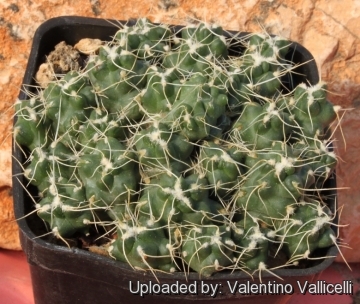 Tephrocactus pulcherrimus (Maihueniopsis subterranea subs. pulcherrima) Photo by: Valentino Vallicelli
Tephrocactus pulcherrimus (Maihueniopsis subterranea subs. pulcherrima) Photo by: Valentino Vallicelli Tephrocactus pulcherrimus (Maihueniopsis subterranea subs. pulcherrima) Photo by: Valentino Vallicelli
Tephrocactus pulcherrimus (Maihueniopsis subterranea subs. pulcherrima) Photo by: Valentino Vallicelli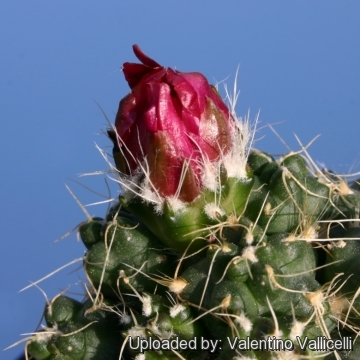 Tephrocactus pulcherrimus (Maihueniopsis subterranea subs. pulcherrima) Photo by: Valentino Vallicelli
Tephrocactus pulcherrimus (Maihueniopsis subterranea subs. pulcherrima) Photo by: Valentino Vallicelli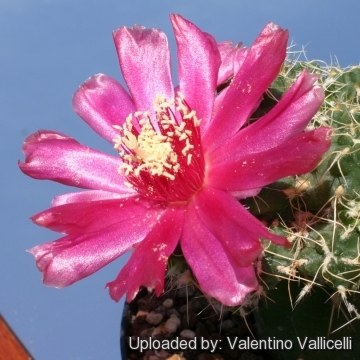 Tephrocactus pulcherrimus (Maihueniopsis subterranea subs. pulcherrima) Photo by: Valentino Vallicelli
Tephrocactus pulcherrimus (Maihueniopsis subterranea subs. pulcherrima) Photo by: Valentino Vallicelli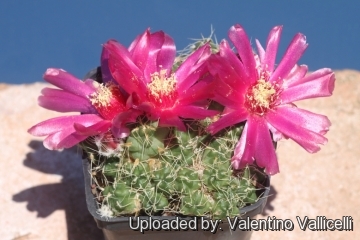 Tephrocactus pulcherrimus (Maihueniopsis subterranea subs. pulcherrima) Photo by: Valentino Vallicelli
Tephrocactus pulcherrimus (Maihueniopsis subterranea subs. pulcherrima) Photo by: Valentino Vallicelli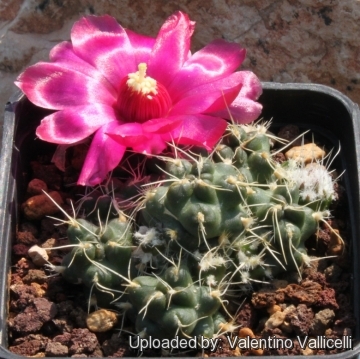 Tephrocactus pulcherrimus (Maihueniopsis subterranea subs. pulcherrima) Photo by: Valentino Vallicelli
Tephrocactus pulcherrimus (Maihueniopsis subterranea subs. pulcherrima) Photo by: Valentino VallicelliCultivation and Propagation: This species resists cold well if it is dry and need to be kept in a cool place during winter rest (this is important for the flowers as well as for their health) Without this cool winter period they normally wont get many buds.. This mountain cactus - because of the elongated fat taproot - necessitate deep pots and a well drained mineral potting mix. They are susceptible to overwatering, but need enough water during vegetation. Requires full sun. Specimens in culture, in special grafted ones, presents a bigger amount of glochids than the ones growing in their habitat. Need a sufficient amount of air.
Propagation: Usually propagated by cuttings and grafting . Grafted plants in culture are most common and sprout strongly. But it is also feasible to root them but they grow much slower on their own roots and takes various years prior to they bloom.
















